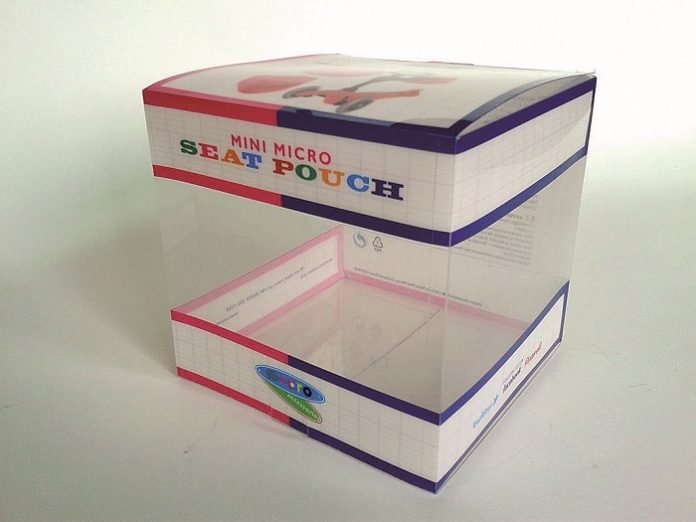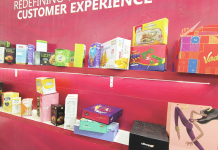The focus of our industry today is efficiency. We are faced daily with the need to cut costs. For example, an efficient diecutting press should average about 88% run-time. Short makereadies are a must to achieve these downtime goals.
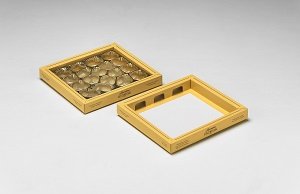 The problem we are faced with today is not how fast we can push our operator to put a job on and get it running, but what is actually accomplished, or not accomplished — prior to the on-press makeready. I believe 80% of an efficient on-press make ready actually takes place before the job even gets to pre-makeready.
The problem we are faced with today is not how fast we can push our operator to put a job on and get it running, but what is actually accomplished, or not accomplished — prior to the on-press makeready. I believe 80% of an efficient on-press make ready actually takes place before the job even gets to pre-makeready.
This article will look at five fundamental aspects of efficient folding-carton diecutting — carton design; production layout; die and tooling; prepress set up; and on-press makeready. By concentrating on the efficiency of each aspect, you can save your cutting department a lot of grief and unnecessary downtime. A machine makeready average for a whole month of around 1.0 hours is achievable — I can personally account for that!
Carton design — 20%
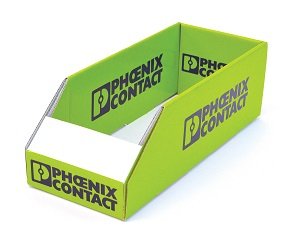 What part does a carton’s design play in speeding up diecutting? The simplicity of a carton and the die to cut it are key to easier production. Three areas should be questioned:
What part does a carton’s design play in speeding up diecutting? The simplicity of a carton and the die to cut it are key to easier production. Three areas should be questioned:
Combination rule — is it really needed or is it used as a crutch? Instead, try alternative types of scoring, such as reduced bead creasing. Hairpin slots — these are labour-intensive in both pre-makeready and makeready In addition, they can leave scrap in the load and can trip electric eyes. If possible, eliminate hairpin slots. Special features and their location — opening features, glue assists, reverse cuts, embossing and debossing may all be necessary to a carton’s design, but add time, cost and potential diecutting problems down the line.
Suggestions which can smooth production
Each department manager, prior to final customer approval, must sign off on all designs going into production. He should evaluate each design for simplicity, making the design better and machine friendly. If your designer has to rush something to a customer, place a label on the design that reads, ‘This design is pending approval by production personnel — any necessary changes will be made and a new design will be generated for your approval.’ Don’t buy into the salesman’s line, “We can’t change this — the customer has already approved it.” Impose a CAD number to the individual carton design so that die side and printed side are consistent in your facility.
Production layout — 30%
Five aspects of the carton’s production layout are critical to the diecutting process. They will either make or break your efficiency.
• The layout needs to be generated at the estimating or design sign-off stage. Make sure the estimating layout is approved by cutting before it is used for quotation purposes. What is important is to get the most items on a sheet that will run quickly and effectively; not how many cartons will actually fit on one sheet. Knowing the number of cartons in a sheet and actual sheet size helps capture a true price while estimating.
• Use blanker operator input. Customer service, the estimator and employees not directly involved in blanking should consult the blanker operator in order to help prevent the problem before it happens. The operator will feel included and want to make the layout a success when it hits the press. This also promotes a team atmosphere.
• Visualize the sheet/layout through each phase of the cutting press. How will it travel through the stripper? What things can catch? Does the female stripper need carrier rule in it? How will it blank? What areas will catch on the grid or flat top? How much offset on the female blanking grid will be needed for single/ double knife running operator to gear side? If your company has blankers and non-blankers, lay out the job with breaker knives so you can sheet blank it for the air hammer if needed. Prepare ahead of time for those rush jobs.
• Use grain direction and double knifing to eliminate internal stripping and assist in blanking. Grain direction is more critical to cutting than printing. Double knifed jobs in both directions require special attention to the layout. Most of the time a stiff grain sheet will be your only effective option. Don’t strip if you don’t have to. This is a labour-intensive part of the makeready process.
• Generate a vinyl or Mylar of the production layout. This can help the die room or pre-makeready get started on making in-house tooling, if necessary.
• Die and tooling — 30%
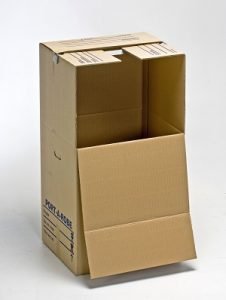 • The die and tooling constitute about 75% of your prepress or pre-makeready efficiencies, even though they constitute only 30% of the on-press makeready.
• The die and tooling constitute about 75% of your prepress or pre-makeready efficiencies, even though they constitute only 30% of the on-press makeready.
• Do your homework. Ask your salesman about run quantities and how many runs in a year. Find out what die and tooling costs are actually being built into the estimate. Place timely orders, which help to reduce the cost of shipping. Some suppliers will offer free shipping with five working days’ notice. It also generates enough time to assemble ‘burned only’ tooling.
• Laser tools versus handmade and universal tooling. Know the benefits and drawbacks of each to help determine the best choice for the new size and style going into production.
• Know what types of tools to order. Some of the choices are: steel, composite, for example, Rayform or maple dies; Strip Clip, regular or power strippers; steel, flat top, Rayform or universal blankers; and matrix, phenolic, steel or hand cut female counterplates.
Prepress set up — 10%
Prepress set up constitutes the other 25% of your prepress or pre-makeready efficiencies. A variety of easily-accessible equipment and an organized method to accomplish set up are vital, including a counter transfer machine; easy-set table; lift cart; extra storage cassettes, a hoist system and systematic storage systems with humidity control. A centreline system allows dies, strippers and male blankers to be set to be almost exact in press with no needed adjustments.
In addition, organization is key. All components should be in their place. File folders should be kept with saved job information for both diecutter operators and pre-makeready personnel. Cleanliness and accuracy must be maintained throughout.
On-press makeready — 10%
Pay attention to the following four areas for making on-press makeready more efficient.
• Job-setting histories. Knowing the proper information about a job will speed on-press makeready when the job is run again. This data includes feeder settings, tonnage, delivery load, Bernoulli (air) bar between platen and stripper and stripper and blanker, and the location of extra knives and counters.
• Pit stop concept. Have a neighbouring pressman set the feeder while two others take tools out of the press. Then have the same pressman set swords and perform line clearance while the operator and assistant are inserting the next job’s tooling.
• Keep all necessary tools at hand. These might include Allen and crescent wrenches, die and nick grinders, spot-up tape (self-adhesive), a toolbox, makeready knife and tape (masking and two-sided).
• Use machine and tooling alignment techniques. For tools, these might include T-Rails, plastic bolts for male and female strippers, 1 mm plate micro adjusters, centreline systems, machine adjustment features and the Quicklock system by Bobst. Records of diecutting press foot-printing or press levelling to use as a basis of operation and proper preventative maintenance are also on-press makeready requirements.
Available resources
You can make your diecutting operation more efficient by taking advantage of other informational resources: the expertise of machine manufacturers, information and advice from die and tool suppliers, the Bobst ABC Book and other training manuals, independent diecutting consultants and organizations like the IADD which provide seminars, networking and technical information.
This article was adapted from the IADD’s publication The Cutting Edge.



